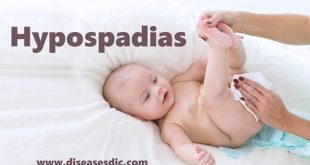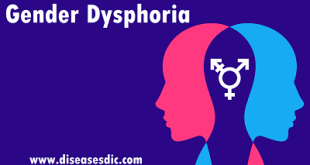Overview of Goldenhar Syndrome
Goldenhar syndrome, also known as oculo-auriculo-vertebral spectrum (OAVS), is a rare congenital disorder characterized by a wide range of developmental abnormalities that typically affect the face, ears, and spine. Named after the 19th-century German ophthalmologist Dr. Maurice Goldenhar, this condition is present at birth and can vary greatly in its presentation. Common features of Goldenhar syndrome include underdeveloped or absent facial structures on one side of the face (hemifacial microsomia), which can lead to asymmetry and difficulties with chewing, swallowing, and speech. Individuals with Goldenhar syndrome may also have eye abnormalities, such as colobomas (a gap or hole in the structures of the eye), ear anomalies, hearing loss, and vertebral (spine) defects. Additionally, some individuals may experience heart, kidney, or lung abnormalities, although these are less common.
The exact cause of Goldenhar syndrome is not well understood, but both genetic and environmental factors are believed to play a role in its development. While there is no cure for Goldenhar syndrome, treatment is focused on managing the specific symptoms and may include surgical interventions to improve facial and jaw abnormalities, hearing aids or cochlear implants for hearing loss, and therapy to address speech and language difficulties. Early intervention and a multidisciplinary approach involving various medical specialists can greatly improve the quality of life for individuals affected by this condition, allowing them to lead fulfilling and productive lives with appropriate support and care.
Pathophysiology of Goldenhar Syndrome
Vascular disruption in the blood supply to the first and second branchial arches, especially at the time of switching from stapedial to external carotid artery supply, is believed to be the cause in many cases of the Goldenhar anomaly; this disruption could be genetically linked. Another hypothesis suggests that a defect of blastogenesis results from deficiency in migration of neural crest cells, deficiency of mesodermal formation, or defective interaction between neural crest cells and mesoderm. A transgenic mouse line model with autosomal dominant hemifacial microsomia suggested the anomaly consisted of a mutational deletion (23 kb at least) on the locus Hfm (hemifacial microsomia-associated locus) on chromosome 10 (in the mouse). The disorder may be present in monozygotic twins, with only one twin being affected.
Microtia & preauricular skin tag and limbal dermoid in the same child
Epidemiology
Goldenhar syndrome is considered a rare congenital disorder. The exact prevalence of Goldenhar syndrome is not well-documented, and it varies in different populations. It is estimated to occur in approximately 1 in every 3,000 to 5,000 live births. However, the actual prevalence might be higher due to underdiagnosis or misdiagnosis, as the condition can present with a wide range of symptoms and severity. The syndrome affects both males and females, and there is no specific racial or ethnic predisposition. Each case of Goldenhar syndrome can vary significantly in terms of the specific abnormalities present and their severity. Some individuals may have mild symptoms, while others may experience more complex and severe manifestations of the disorder.
Due to its rarity and the variability in its presentation, Goldenhar syndrome often requires a multidisciplinary approach for diagnosis, treatment, and management. Medical professionals, including geneticists, pediatricians, otolaryngologists, ophthalmologists, and other specialists, work together to provide comprehensive care for individuals affected by this condition. Research and awareness efforts continue to enhance our understanding of Goldenhar syndrome and improve the quality of life for affected individuals and their families.
Types of Goldenhar Syndrome
Goldenhar syndrome, also known as oculo-auriculo-vertebral spectrum (OAVS), is a rare congenital disorder characterized by abnormalities that can affect the eyes, ears, and spine. The features of Goldenhar syndrome can vary widely among affected individuals, but some common types of abnormalities associated with the condition include:
Facial Abnormalities:
- Hemifacial Microsomia: One side of the face is underdeveloped, leading to facial asymmetry.
- Mandibular Hypoplasia: Underdevelopment of the lower jaw.
- Microtia: Abnormally small or malformed ears.
Eye Abnormalities:
- Epibulbar Dermoids: Benign growths on the eye’s surface.
- Coloboma: A gap or hole in certain structures of the eye, such as the iris, retina, choroid, or optic disc.
Spinal Abnormalities:
- Vertebral Anomalies: Abnormalities in the development of the spine, which can lead to issues such as scoliosis or fused vertebrae.
Other Abnormalities:
- Cardiac Abnormalities: Some individuals with Goldenhar syndrome may have heart defects.
- Renal Abnormalities: Kidney problems can occur in some cases.
- Limb Abnormalities: Rarely, abnormalities in the arms or hands may be present.
- Cleft Lip and Palate: Some individuals with Goldenhar syndrome may have a cleft lip and/or palate.
It’s important to note that not all individuals with Goldenhar syndrome will have all of these features, and the severity of the condition can vary widely.
Signs and symptoms
The main features of this condition are unilateral underdevelopment of one ear (which may even not be present) associated with underdevelopment of the jaw and cheek on the same side of the face. The following may also occur:
- Mandibular hypoplasia (facial asymmetry)
- Eye anomalies:Microphthalmia, anophthalmia, epibulbar dermoids, and eyelid colobomas
- Ear anomalies:Preauricular tags, anotia (totally absent ear), and microtia (partially formed ear)
- Vertebral anomalies: Scoliosis, kyphosis, hemivertebrae, and cervical fusion
- Cleft lip and/or palate
- Wider than normal mouth
- Hydrocephalus
- Congenital heart defects in ⅓ of patients (most commonly septal and conotruncal defects, e.g., tetralogy of Fallot)
- Genitourinary malformations (e.g., ectopic or fused kidneys, renal agenesis, ureteropelvic junction obstruction, or vesicoureteral reflux)
- Partial or complete unilateral lung hypoplasia
- Developmental delay and autism spectrum disorder in some patients
Normal morphology of right ear and deformed left ear with preauricular tags and microtia
What are the causes of Goldenhar Syndrome?
The exact cause of Goldenhar syndrome is not well understood. It is considered a complex congenital disorder, which means that it likely results from a combination of genetic and environmental factors. While the precise causes are unknown, there are several theories and factors that researchers believe might contribute to the development of Goldenhar syndrome:
- Complex Condition: Goldenhar syndrome is a complex congenital disorder, which means it results from a combination of factors.
- Genetic Mutations: Some cases may occur due to changes in specific genes crucial for normal development, though these are not found in all cases.
- Environmental Factors: Certain factors during pregnancy, like exposure to substances that disrupt development, might contribute to the syndrome.
- Vascular Disruptions: Interruptions in the blood supply during early fetal development could lead to malformations seen in Goldenhar syndrome.
- Not Inherited: Most cases happen by chance and are not passed down from parents.
Risk factors of Goldenhar Syndrome
Multifactorial etiology has been proposed where nutritional and environmental factors along with genetic dysregulation have been projected as the causative factors.
- Drugs: Thalidomide, Cocaine, Retinoic acid, Tamoxifen, Anticoagulants (result in hematoma in the region of the developing ear and jaw which causes destruction of the differentiating tissue leading to branchial arch dysplasia)
- Maternal diabetes
- Multiple gestations
- bleeding in the second trimester
- Malnutrition
- Exposure to tobacco during pregnancy
- Chromosomal aberrations such as 3del(5p), del(6q), del(8q)(161), del(18q), del(22q), recombinant chromosome 18, ring 21 chromosome, and dup(22q)
- Maternal and fetal hypoxia
- Hypertension
- Radiodiagnostic procedures such as cholecystography practiced between the 4th and 6th week of gestation.
- Consanguineous marriage
Complications
Goldenhar syndrome can result in various complications due to the range of abnormalities it causes. Complications may vary widely from person to person, and some individuals may have only minor issues, while others may face more significant challenges. Here are potential complications associated with Goldenhar syndrome:
- Facial and Cranial Issues: Asymmetrical facial development, underdeveloped jaw, and ear malformations can lead to difficulties with speech, chewing, and hearing impairment.
- Eye Problems: Eye abnormalities like coloboma can affect vision. Epibulbar dermoids might cause discomfort or impact vision if they obstruct the visual axis.
- Hearing Loss: Malformed or underdeveloped ears can result in conductive hearing loss, making it challenging to hear sounds clearly.
- Spinal Abnormalities: Vertebral anomalies may lead to spinal deformities such as scoliosis, potentially causing back pain and mobility issues.
- Psychosocial Challenges: Facial differences can lead to self-esteem issues, social challenges, and psychological stress, especially during childhood and adolescence.
- Dental Problems: Jaw abnormalities can cause dental issues, including misalignment of teeth and difficulty in maintaining oral hygiene.
- Cardiac and Renal Issues: Some individuals might have associated heart or kidney abnormalities, leading to additional health concerns.
- Speech Difficulties: Facial and jaw abnormalities can affect speech development, leading to speech difficulties that may require speech therapy.
- Breathing Difficulties: Severe jaw and facial deformities can occasionally cause breathing difficulties, especially during sleep, requiring medical intervention.
- Developmental Delays: Children with Goldenhar syndrome might experience delays in reaching developmental milestones, which can impact learning and social interactions.
Diagnosis
Doctors may suspect a baby has Goldenhar syndrome either before or after a baby is born.
Before birth. If a prenatal ultrasound scan shows signs of Goldenhar syndrome, the doctor may do other tests, such as
- Fetal MRI(magnetic resonance imaging)
- Fetal echocardiogram(heart ultrasound scan)
- After a baby is born. Sometimes doctors notice signs of Goldenhar syndrome after a baby is born. If so, they’ll do:
- An exam
- Breathing and feeding studies
- X-rays
- MRIs
- Computed tomography (CT) scans
- Ultrasound scans
- Genetic tests
There’s no one test to confirm that a baby has Goldenhar syndrome. Doctors will make a diagnosis based on the signs and symptoms. Sometimes, they’ll do genetic testing to check for similar conditions
What is the treatment of Goldenhar Syndrome?
Goldenhar syndrome treatment depends on the signs an individual is showing, along with their age. The doctor may recommend different interventions at different stages of development.
Here are various treatments that may be given to a person with Goldenhar syndrome:
- Feeding. People with Goldenhar syndrome may have trouble eating because of malformed facial features. The doctor may recommend special feeding bottles for this condition. Another option is a nasogastric feeding tube, which is a special tube taking medicine and food through the nose to the stomach. A nurse will teach you how to use and flush the tube and perform skin care for the area around the nose.
- Breathing. Some people, especially those with an underdeveloped jaw, may develop sleep apnea. These individuals should be provided with appropriate intervention strategies from relevant medical specialists.
- Speech. People with Goldenhar syndrome also have trouble with speech due to craniofacial malformation. The doctor may recommend speech therapy for this.
- Hearing loss. When children are born with Goldenhar syndrome, doctors recommend a hearing evaluation at six months. If any hearing problems are detected, your doctor may recommend hearing aids or similar treatments, depending on how severe the hearing loss is.
- Cleft lip or cleft palate. The appropriate treatment for this is surgical repair. Similarly, if there are any heart defects, spine problems, or kidney conditions, those will also be treated through surgery.
- Epibulbar tumors. These are noncancerous cell growths in the eyes. A surgeon will remove them if they interfere with your eyes or are generally too large to be left in.
Since Goldenhar syndrome is visible at birth, your doctor can create a treatment plan early on. The interventions and treatments will differ as your child grows and develops. Speak to your doctor if your child is having any breathing, feeding, or speaking.
Prevention of Goldenhar Syndrome
Preventing Goldenhar syndrome involves understanding the potential risk factors associated with the condition. However, since the exact causes of Goldenhar syndrome are not fully known and the condition often occurs sporadically, it is challenging to prevent it entirely. Here are some general suggestions to promote a healthy pregnancy, which might indirectly reduce the risk of certain congenital disorders, including Goldenhar syndrome:
- Regular Check-ups: Get early and regular prenatal care to monitor the baby’s development.
- Healthy Lifestyle: Maintain a healthy lifestyle with balanced diet, exercise, and no smoking or alcohol during pregnancy.
- Avoid Harmful Substances: Stay away from harmful chemicals and medications, especially without consulting a healthcare provider.
- Genetic Counseling: If there’s a family history, consult a genetic counselor for guidance on family planning.
- Prevent Infections: Take precautions to avoid infections by practicing good hygiene and getting recommended vaccinations.
- Nutrition and Folic Acid: Eat healthily and consider folic acid supplements as they can help prevent certain birth defects.
Remember, these steps promote general health during pregnancy but may not entirely prevent rare conditions like Goldenhar syndrome, which have complex causes. Always consult healthcare providers for personalized advice.
 Diseases Treatments Dictionary This is complete solution to read all diseases treatments Which covers Prevention, Causes, Symptoms, Medical Terms, Drugs, Prescription, Natural Remedies with cures and Treatments. Most of the common diseases were listed in names, split with categories.
Diseases Treatments Dictionary This is complete solution to read all diseases treatments Which covers Prevention, Causes, Symptoms, Medical Terms, Drugs, Prescription, Natural Remedies with cures and Treatments. Most of the common diseases were listed in names, split with categories.







